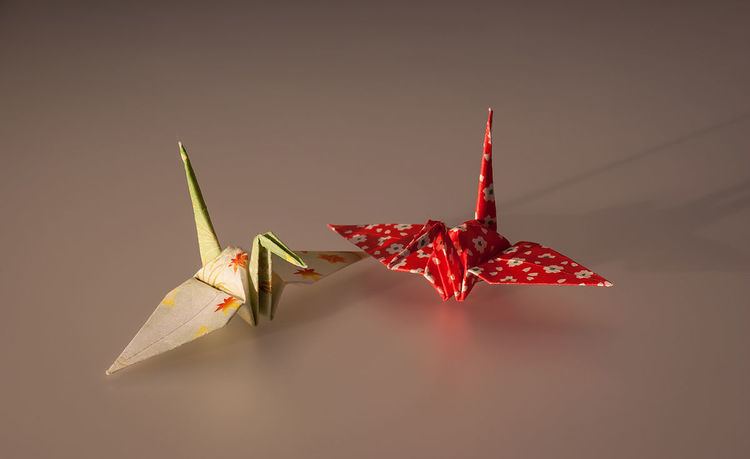 | ||
The orizuru (折鶴 ori- "folded," tsuru "crane"), or paper crane, is a design that is considered to be the most classic of all Japanese origami. It is a representation of the Japanese red-crowned crane that is referred to as the "Honourable Lord Crane" in Japanese culture. The Japanese culture believed that its wings carried souls up to paradise. It is often used as a ceremonial wrapper or restaurant table decoration. A thousand orizuru strung together is called senbazuru (千羽鶴), meaning "thousand cranes". "Sadako and the Thousand Paper Cranes" is a classic Japanese work that talks about the significance of a thousand paper cranes. It is said that a thousand cranes need to be made in order for a wish to come true.
Renzuru
The term renzuru (連鶴, "conjoined cranes") refers to an origami technique whereby one folds multiple cranes from a single sheet of paper (usually square), employing a number of strategic cuts to form a mosaic of semi-detached smaller squares from the original large square paper. The resulting cranes are attached to one another (e.g., at the tips of the beaks, wings, or tails) or at the tip of the body (e.g., a baby crane sitting on its mother's back). The trick is to fold all the cranes without breaking the small paper bridges that attach them to one another or, in some cases, to effectively conceal extra paper.
Typical renzuru configurations include a circle of four or more cranes attached at the wing tips. One of the simplest forms, made from a half-square (2x1 rectangle) cut halfway through from one of the long sides, results in two cranes that share an entire wing, positioned vertically between their bodies; heads and tails may face in the same or opposite directions. This is known as imoseyama. If made from paper colored differently on each side, the cranes will be different colors.
This origami technique was first illustrated in one of the oldest known origami books, the Hiden Renzuru no Orikata (1797). (Updated diagrams from this early work can be found in a current book by Japanese origami author Kunihiko Kasahara.)
